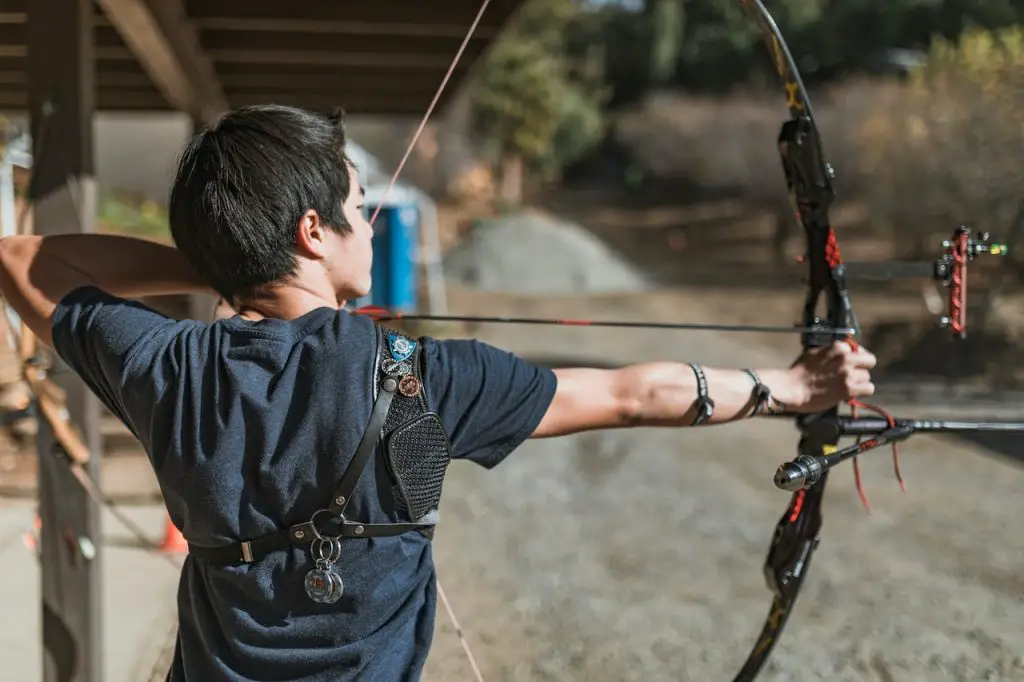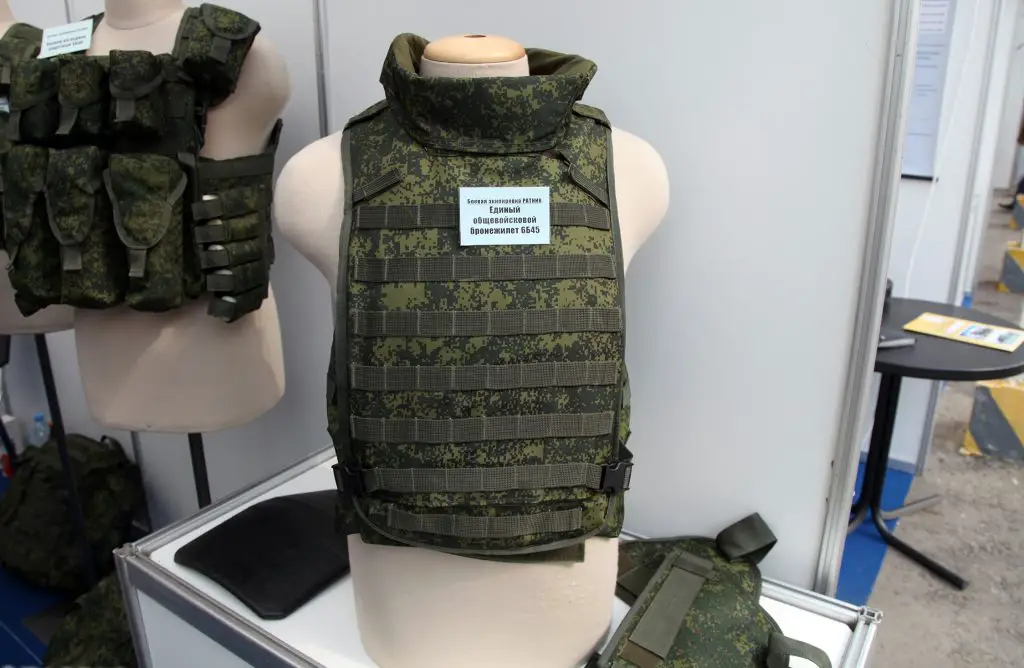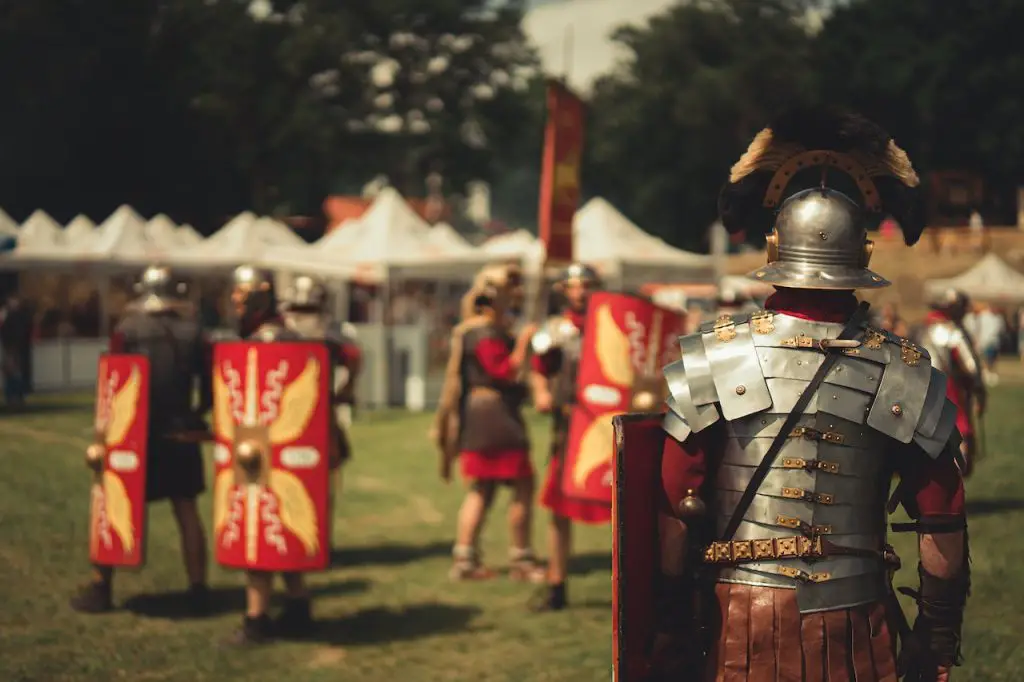Can Compound Bow Pierce Body Armor?
When it comes to personal protection, body armor is often the first line of defense against physical harm.
In the same vein, the compound bow is a highly effective weapon for hunting and target practice.
However, a question often arises about whether a compound bow can pierce body armor.

Body armor is designed to protect against projectiles, such as bullets and shrapnel, and blunt force trauma.
It comes in different types, but the most common are soft armor and hard armor.
Soft armor is made of Kevlar or similar materials, and it is effective against most handgun rounds.
On the other hand, hard armor is made of ceramic, steel, or polyethylene, and it can withstand high-powered rifle rounds.
Now,
A compound bow is a modern type of bow that uses a system of cables and pulleys to bend the limbs, allowing the archer to draw the string with less effort.
It is a powerful and accurate weapon, capable of hitting targets at great distances.
Compound bows can shoot different types of arrows, including broadheads, field points, and mechanical heads.
What is Body Armor?
Body armor is a type of protective gear designed to protect the wearer from different types of threats.
It is typically made of multiple layers of materials that are designed to absorb the impact of projectiles and disperse the energy across the entire surface of the armor.
There are several types of body armor available on the market, each with its own strengths and weaknesses.
Soft Armor
Soft armor is made of Kevlar or similar materials and is designed to protect against handgun rounds.
It is made up of layers of woven fibers that are designed to stop the bullet and prevent it from penetrating the armor.
Soft armor is commonly used by law enforcement officers and civilians who need protection against firearms.
Hard Armor
Hard armor is made of ceramic, steel, or polyethylene and is designed to protect against high-powered rifle rounds. It is heavier and less flexible than soft armor, but it provides a higher level of protection against more powerful threats.
Hard armor is used by military personnel and law enforcement officers who are at risk of encountering high-powered rifles in the line of duty.
Hybrid Armor
There are also hybrid armor systems that combine the features of both soft and hard armor. These systems are designed to provide a higher level of protection against a wider range of threats.
Body armor is rated based on the level of protection it provides.
The National Institute of Justice (NIJ) sets the standards for body armor in the United States.
The levels of protection are based on the type of ammunition the armor can protect against, the velocity of the ammunition, and the caliber of the weapon.
What is a Compound Bow?
A compound bow is a modern type of bow that uses a system of cables and pulleys to bend the limbs, allowing the archer to draw the string with less effort. This design makes the bow more efficient, powerful, and accurate than traditional bows.
The limbs of a compound bow are made of composite materials, such as fiberglass, carbon fiber, or aluminum.
They are stiffer than traditional bow limbs, allowing the bow to store more energy when the string is drawn back.
The system of cables and pulleys, known as the cam system, helps reduce the amount of effort needed to draw the string back to full draw length.
The cams are designed to work together, creating a “let-off” at full draw, which reduces the amount of holding weight the archer needs to maintain to keep the bow drawn.
This allows the archer to aim and hold the bow steady for a longer period of time, increasing accuracy.
Compound Bow Arrows Type
Compound bows can shoot different types of arrows, including broadheads, field points, and mechanical heads.
Broadheads are used for hunting and are designed to penetrate the target and cause a large wound channel.
Field points are used for target practice and are designed to be aerodynamic and accurate. Mechanical heads are a combination of the two, with retractable blades that deploy upon impact, causing a larger wound channel.
Compound bows are popular among archers, hunters, and competitive shooters because of their efficiency and accuracy. They are also used in military and law enforcement operations as a silent and lethal alternative to firearms.

Can Compound Bow Pierce Body Armor?
When it comes to combat situations, body armor is a crucial piece of protective gear for military personnel and law enforcement officers.
The armor is designed to stop projectiles, such as bullets, from penetrating the body and causing serious injury or death.
But can a compound bow penetrate body armor?
The answer is yes, but not all times.
The kinetic energy of an arrow or bolt from a crossbow is much higher than most bullets, except for some calibers.
The main difference between a firearm and a bow or crossbow is the rate of fire versus stopping power. Bows and crossbows are slower, but more powerful.
Broadtip arrows are designed to pierce plate armor and are capable of piercing modern steel, ceramic, and other materials.
Bladed hunting arrows are designed to pierce thick hides or Kevlar. Arrows and bolts are far more effective at killing someone in short to medium ranges, which is typically the range of most combat situations.
Therefore the right type of bow or crossbow can pierce through riot shields and penetrate 99% of body armor.
Could a bulletproof vest protect you from an arrow?
The short answer is, it depends. The effectiveness of a vest against an arrow depends on the type of vest and the type of arrow.
Bulletproof vests, typically made of aramid fibers such as Kevlar, are designed to stop bullets.
Bullets attempt to stretch the fibers apart and force their way between them, which aramid weaves are specially made to resist. However, knives and arrows work differently. Rather than trying to stretch the fibers, they simply cut through them.
While some bulletproof vests are also stab-resistant, they are not necessarily arrow-resistant. To be stab-resistant, vests require additional layers of hard materials such as metal or plastic.
In the case of the highest-level bulletproof vests used by soldiers, they may also include titanium or ceramic plates to stop rifle bullets.
So, a non-bulletproof stab vest or a stab-rated bulletproof vest could potentially perform well against an arrow. However, they are not specifically designed to stop arrows, and the effectiveness would depend on factors such as the type of arrow, the range, and the angle of impact.
A decent bow can generate 60-105J of kinetic energy, while the highest level of stab protection rating is against 40-45 J.
So while a vest may slow down the arrow and lessen its impact, there is still a chance that the arrow could penetrate the vest and cause injury.

Can Compound Bow penetrate Medieval Armor?
The ability of a compound bow to penetrate medieval armor would largely depend on the type of armor being used and the strength and type of arrow being fired.
Medieval armor consisted of various types, including mail armor, plate armor, and lamellar armor.
- Mail armor, made of interlocking rings of metal, was effective against slashing and piercing attacks but less effective against blunt force attacks.
- Plate armor, made of metal plates covering the body, was designed to protect against piercing attacks such as those from arrows and bolts.
- Lamellar armor, made of overlapping rectangular plates, was effective against both piercing and slashing attacks.
In general, it is possible for a properly equipped and trained archer to penetrate medieval plate armor with a compound bow, especially if using specialized broadhead arrows designed for armor penetration.
For example Bodkin arrowheads were commonly used during the medieval period as they were specifically designed to penetrate armor. They were long and narrow, with a pointed tip that was capable of slipping through the gaps in armor or piercing through the weaker points. Bodkin arrows were particularly effective against chainmail armor, which was widely used during the period, as the pointed tip could penetrate between the links.
It’s also worth noting that using a compound bow to fire a bodkin arrowhead would require a great deal of skill and precision. The draw weight of a compound bow is significantly higher than that of a traditional longbow, and firing a bodkin arrowhead accurately would require a great deal of practice and training.
It is also worth noting that in medieval times, the use of bows and crossbows was often regulated, and only certain individuals were allowed to use them.
This was due to the effectiveness of these weapons in battle and their ability to penetrate armor.
Additionally, armor was often designed to be effective against the weapons of the time, including arrows and bolts, so it was not always easy to penetrate.
In conclusion, a compound bow can potentially penetrate medieval armor, but it would depend on various factors such as the type of armor being used, the strength and type of arrow being fired, and the skill of the archer.
How to Protect Against Arrows from a Compound Bow
it is indeed possible to penetrate body armor with a compound bow, but only if the appropriate arrows are used and the Kevlar is of a certain type.
However, it’s important to note that a compound bow has limited use beyond hunting, practice, and recreational activities. If you don’t intend to engage in these activities, then owning a bow may not be necessary.
Check: Is a 40 lb Bow Powerful Enough for Bowhunting?
It’s crucial to remember that a compound bow is a lethal weapon, and therefore, safety should always be the top priority.
Whether you’re practicing or using it for other purposes, always take necessary precautions to ensure the safety of yourself and those around you.
With that being said, enjoy the thrill of using a compound bow and the satisfaction of hitting your target with accuracy.
